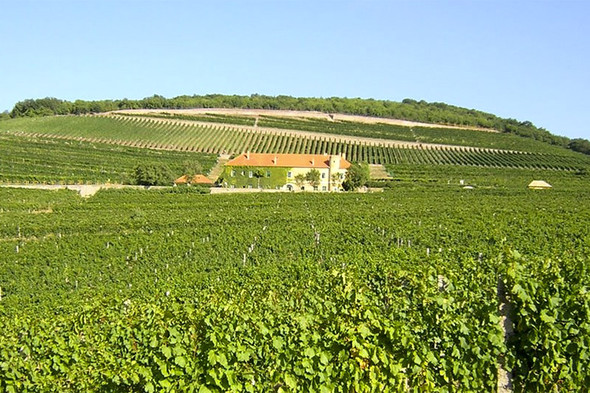If Jakab Hill has not caught your attention, the motto of Pauline hermits about ‘double rations’ surely has. But how do these two things come together at all? And what has it got to do with this month’s communion wine? Let us hold hands, close our eyes and set off on an imaginary journey to the south, towards the city of Pécs…
Pécs is not only a wonderful city with many sights but also the centre of a wine region. No, not the centre of Villányi Wine Region. There is an independent area which used to be called Mecsekaljai until recently but is now named after the city and we might add that this is really justified because once upon a time the whole hill around Pécs was covered with vines. Today, however, there are larger estates only at two sites of the Pécsi Szőlészeti és Borászati Kutatóintézet (Research Institute for Viticulture and Oenology Pécs) which is part of the University. The rest has been consumed by the city; the vines have been replaced by swimming pools disguised as firewater storages and three-storey luxury homes labelled as press houses. Sad, no doubt, but the wine region exists, strives and prospers, stretching all the way over the southern borders of the Mecsek, starting from Mozsgó and Szigetvár through Pécs until Pécsvárad and Mecseknádasd including the hills lying next to the Danube, with the vineyards of Bóly, Mohács, Versend and Dunaszekcső.

Help me! I’m lost!
I don’t presume Hungarian winelovers have a full knowledge of national wine regions, their boundaries, belonging towns and villages. How could one be expected to remember all 22 wine regions in such a small country? Sometimes in a smaller region it is problematic even to identify the exact boundary between wine regions. For instance, the Pécs Wine Region has interesting villages at both sides. In the north, it is Mecseknádasd where the estate centre of a well-known Szekszárd cellar is situated, and in the south, in Kisjakabfalva (or Jackfall in its old Swabian name) where a Villány winemaker is making his wines. Meanwhile both villages are actually part of the Pécs Wine Region. So the question arises: who is from Pécs then? Well, this is it. The biggest problem of the wine region is not that you haven’t heard about it but the majority of Pécs residents hasn’t either. When walking in downtown Pécs (which is highly recommended to everyone at least once a year as this city has a Mediterranean atmosphere that makes the heart younger and blood flow faster) one can’t help but see wine bars and wineries everywhere but the wine lists hardly display any wines made in Pécs. There are, however, Villányi red wines. Everyone seems to prefer that.

How do the Pauline hermits come into the picture?
Well, as the story goes, hermits had been living in Jakab Hill as early as the beginning of the 13th century, regulated by the Bishop of Pécs before Blessed Eusebius of Esztergom united all scattered hermits in the Pilis – where the monks of Pécs also joined. Later the Pécs cathedral chapter had its vineyard here and today this is the estate of the above-mentioned Research Institute. Knowing the history, the Pauline hermits signed an agreement with the Institute in 2007 to prepare the communion wine for Pauline communities every year. Usually a dry (mostly made from Welschriesling) and a semi sweet wine is made, approximately 1000 bottles of each but not all is consumed in Hungary, but the hermits of Częstochowa, Poland drink the same. Originally, the wine was planned to be sold in several places with the intention to make Pauline hermits popular but it did not work out due to the too large margin and obstinate traders. Currently, the Pauline hermits’ communion wine is only available at the hermits themselves or in the shop run by the Research Institute for Viticulture and Oenology Pécs. Personally, I recommend the sweeter version (I had the chance to try both and there is no problem at all with the dry one, either) because good sweet wines somehow prove God’s existence to me and remind me of the miracle of creation. Let us have a sip and enjoy the long aftertaste while walking up the Gellért Hill and pray in the Rock Temple.
Pálos Misebor (Pauline Communion Wine) - Pécsi white cuvée 2015 I 86-87 points
There is nothing extreme in this wine. It has a light body, playful acidity and well-balanced residual sugar. Really drinkable, thanks to the winemaker, László Hevér!






